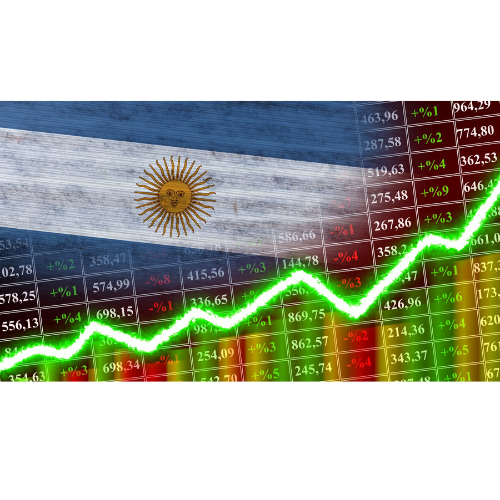Argentina’s Debt Dilemma: Country Risk and Investor Uncertainty in 2025
In September 2025, Argentina finds itself once again at the center of global financial scrutiny. Following a politically charged defeat for President Javier Milei’s party in Buenos Aires province, international markets responded with a sharp selloff of Argentine assets. The peso tumbled, sovereign bonds plunged, and country risk surged—raising urgent questions for global investors about the sustainability of Argentina’s debt and the credibility of its economic reforms.
Argentina’s Debt Burden: A Persistent Threat
Argentina’s debt profile remains one of the most precarious in emerging markets. In 2025, the country faces maturities exceeding $14 billion, while its net reserves at the Central Bank remain in negative territory. Despite efforts by the Milei administration to implement a zero-deficit budget and avoid new borrowing, the sheer scale of Argentina’s obligations—especially to the International Monetary Fund (IMF)—poses systemic risks.
The IMF recently approved a new $20 billion bailout package, bringing Argentina’s total outstanding debt to the Fund to over $65 billion. This makes Argentina the IMF’s largest borrower by far, accounting for 34% of its global exposure. The country’s toxic relationship with the IMF, marked by repeated defaults and failed stabilization programs, continues to haunt investor sentiment.
Country Risk
Country risk has spiked in recent weeks. The political defeat in Buenos Aires was interpreted by markets as a weakening of Milei’s mandate to push through structural reforms. Investors fear that without legislative support, the government may struggle to maintain fiscal discipline, deregulate key sectors, and uphold its commitment to debt repayment.
Argentina’s EMBI+ spread widened by over 300 basis points in the days following the election, signaling a sharp deterioration in perceived creditworthiness. Sovereign bonds due in 2030 fell to 38 cents on the dollar, reflecting deep skepticism about the country’s ability to honor its obligations.
Argentina’s bi-monetary economy, where the U.S. dollar dominates savings and long-term assets, creates currency mismatches that expose the banking sector to solvency risks. The easing of capital controls, while intended to attract foreign investment, could trigger sudden outflows if the peso depreciates sharply.
Fiscal Discipline vs. Political Reality
President Milei’s zero-deficit budget is a cornerstone of his economic strategy. The plan mandates that expenditures not exceed revenues, with any surplus directed toward debt repayment. This approach, while fiscally sound, faces mounting political resistance. The recent electoral setback suggests that voters are growing impatient with austerity measures, especially amid rising unemployment and stagnant wages.
Moody’s has warned that Argentina may need to renegotiate part of its foreign debt in 2026. The agency cited the country’s narrow external balance and persistent fiscal constraints as key vulnerabilities. If Milei fails to secure broader political support, the risk of another default—Argentina’s tenth since independence—could become a reality.

Implications for Global Investors
For institutional investors, hedge funds, and sovereign wealth managers, Argentina presents a high-risk, high-reward proposition. The country offers attractive yields on sovereign debt, significant opportunities in energy and mining, and a government that—at least rhetorically—supports free-market reforms.
However, the risks are substantial:
- Political instability: Legislative gridlock could derail reform efforts and trigger social unrest.
- Currency risk: The peso remains highly volatile, and hedging costs are elevated.
- Legal uncertainty: Argentina’s history of unilateral debt restructurings and litigation.remains a cautionary tale.
- IMF dependency: Continued reliance on IMF bailouts limits policy autonomy and creates moral hazard.
Investors must weigh these risks against the potential upside. Argentina’s Large Investment Incentives Program (RIGI) offers 30 years of regulatory stability and tax benefits for investments over $200 million in key sectors. For long-term players willing to navigate the turbulence, the rewards could be substantial.
Scenarios and Strategic Considerations
Looking ahead, several scenarios could unfold:
- Reform Consolidation: If Milei regains political momentum and implements his agenda, Argentina could stabilize its macroeconomic indicators and regain market access. Country risk would decline, and bond prices could recover.
- Partial Default: A failure to meet debt obligations in 2026 could trigger a restructuring, with losses for bondholders and a spike in CDS spreads.
- IMF Recalibration: The Fund may revise its program terms, offering more flexibility in exchange for deeper structural reforms. This could ease investor concerns but prolong Argentina’s dependency.
- Market Exit: In a worst-case scenario, capital flight and reserve depletion could force Argentina to reimpose capital controls and abandon its exchange rate band—leading to a full-blown crisis.
